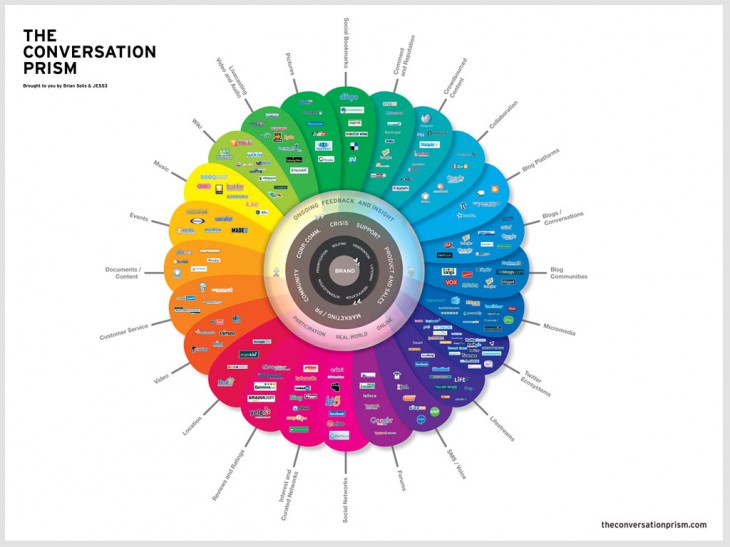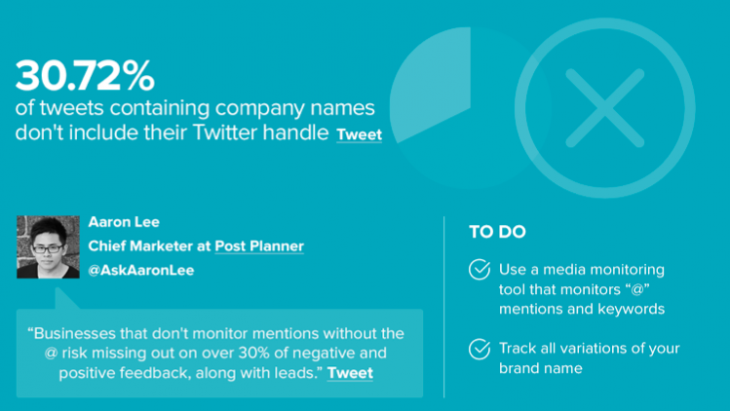
This post originally appeared on the Crew blog.
It often takes an outsider’s perspective to learn about new opportunities, whether they take the form of flaws, bugs, or unique use cases. The most valuable opportunities often come from customers themselves — the people who are hands on with your product every day.
For those just starting-up, or starting to realize that your product and community teams could improve their communications, here are six reasons that your entire team needs to be listening to the conversation surrounding your brand.
1. Guiding your business strategy or product roadmap (pre and post-launch)
Many companies miss a huge opportunity by not building a community pre-launch, when the benefits are abundant. For one, you can gather intelligence around whether or not there’s a product-market fit.
Ryan Hoover of Product Hunt (which just joined Y Combinator) has talked about the benefits of transparency and building a product in the public, such as: increased buy in, early feedback to identify usability issues, and generating excitement around your product.
Another obvious reason is to build awareness early on. By building a relevant community around your product or service and getting people excited about it, the buzz is likely to spread from a more open start.
Give your community good reason to share your product. When you receive constructive feedback, incorporate it and let the source and the public know that your community helped improve your product. This creates genuine inclusion.
Below is a great visual representation of the many avenues available for community engagement and social listening:

How to build your community pre and post launch:
- Identify where your community hangs out. Use a monitoring tool (like Mention) to track keywords related to your product, brand, or service, including competitors. Pay attention to where these conversations are happening.
- Identify influencers and potential brand ambassadors. As you monitor these discussions, make note of who’s leading the conversation and sharing new ideas or products.
- Reach out to potential early adopters. Do research on influencers (with tools like Riffle by CrowdRiff) and look for shared interests to start a dialogue. If they seem interested in your product, offer them a free trial. (They will likely enjoy being the first to try something new.)
- Get them talking to each other. Ask your early adopters to join some sort of group — a hosted forum, Facebook Group, LinkedIn Group, etc. Pose relevant questions to the group and encourage conversation.
2. Quickly identify bugs & issues
Our data has shown that 31 perecnt of tweets with a company’s name don’t include their handle. By listening closely to what your customers are saying about your brand and product — whether or not they’re speaking directly to you — you’re able to answer questions and put out fires.
More importantly, you’ll learn what customer questions are, allowing you to make the appropriate fixes or adjustments required. Some companies use this feedback to scale their support process by adding the questions and answers to their Frequently Asked Questions (FAQs).
By “scaling,” you’re streamlining a critical activity or finding more efficient and effective solutions to a problem. In this example, you’re limiting the number of incoming support tickets by making critical information more readily available.
Scaling processes is usually always a good thing, but I’ve found it really interesting how Buffer chooses not to scale its customer support. Instead, the team listens and reacts to every question until they find a solution. This way, they always have their fingers on the pulse of any issues or bugs or new development opportunities.
By going to the source — your customers online (via listening) — and making your support team readily available, you’re decreasing the time it takes to gather feedback and address the issue. This is also known as creating tighter feedback loops.
How to decrease feedback time:
- Implement a listening program to capture the company mentions that don’t include your company handle or don’t come through email.
- Assign someone or a team to respond to community queries.
- Strive to answer questions within an hour or two. We strive for about 5 minutes or less. Untouched communications can quickly go awry.
3. Stay ahead
By monitoring what’s being said about your competitors and any topics related to your field, you’ll always be one step ahead of your competition (especially if they’re not in on the social listening trend). This is a great opportunity to brainstorm with the entire team — from tech to marketing to leadership — on gaps and opportunities in the market.
How to stay one step ahead of the competition:
- Consider assigning one person to compile bi-weekly or monthly reports with a competitor and industry analysis.
- Make sure to flag any big opportunities that pop-up and assign them to the appropriate team.
- If you are a fan of standup meetings like we are at Mention, this is a great time to share such information with the entire team so that everyone is in the loop and can jump in where needed.
4. Listening = better support = retention = more revenue
Take these stats into account when planning your listening and customer support strategies:
- 80 percent of your future profits will come from just 20 percent of your existing customers, says Gartner Group (via CMO.com).
- According to Lee Resource Inc. (via Forbes), attracting new customers will cost your company 5 times more than keeping an existing customer.
- A discouraged person is 59 percent more likely to share an experience with their friends than a satisfied person, according to CMO.com.
Retention is directly correlated with virality, which is important to any startup. Jamie Quint wrote a really great blog post on this subject. He explains how retention is crucial for sustainable growth, and that not focusing on retention results in a large spike in growth followed by a spike in attrition.
If your users don’t stick around, they are not able to invite others to your product over an extended period of time. Remember, you are in this for the long hall!
How to retain customers:
- Listen and respond! Pay attention to your social streams and use a media monitoring tool to catch meta content such as forum submissions, blog comments, etc.
- Make your FAQ and help centers easy to find and navigate. We use UserVoice for this.
- Check in with customers and ask for feedback.
5. Turn “bad press” into relationships
By monitoring media across the web and social, you’ll find reviews, quotes, articles, and syndicated posts you may not have otherwise. Each finding is an important opportunity to build a relationship with a blogger, journalist, or potential content partner.
Whether positive or negative, make sure to reach out with either a thank you or helpful information to correct any misunderstandings. Don’t hesitate to offer yourself as a resource for future pieces, whether it’s a quote, data, infographic, etc.
How to build relationships with writers:
- Monitor what’s being said about your brand and related keywords across the Web.
- Connect with writers via Twitter or email. Be causal, friendly, and most importantly, helpful.
- Follow up with valuable information, proving yourself to be a reliable resource.
6. Know when a change isn’t working
One of the most difficult things to hear is that the new feature or product change you worked on for months isn’t a market fit. It’s also one of the most important things you can hear. This situation is avoidable by listening to your audience during development, which is also all the reason to continue to listen. Needs change, new products enter market, and trends shift.
Although it hurts, you need to listen to your community and be ready to pivot (change the course of your business plan) in order to continue to meet your customers’ needs, or find a new market.
How to remain agile to make shifts quickly:
- Listen to what’s both being said and not said among your community. A sudden drop (or spike) in communications could mean something is wrong.
- Proactively ask your audience for feedback — if they’re still happy with your product, still using it for the same reasons and goals, etc.
- Always be iterating. If your team is used to testing and iterating, a pivot may not be as painful as otherwise.
Celebrate the wins
As with any team effort, it’s necessary to show the return on investment and celebrate the wins. Encourage your team to share what they find by listening to customers and have them focus on how it has improved your product, workflow, or productivity. This is a great way to achieve team buy-in and motivate everyone to get involved.
Nothing we do as a company, heck as an individual, exists in a vacuum. We have to become more integrated with our communities. It’s not enough anymore to sit on the periphery and watch.
This is about being proactive, not reactive. This is about building and maintaining long-lasting healthy relationships. Most of all, this is about growing, innovating, and learning from mistakes. The communities we serve are already telling us all the answers, the only question is whether or not we are listening.
Read next: Data marketing 101: How startups can put their data to work
Get the TNW newsletter
Get the most important tech news in your inbox each week.






